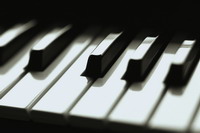Piano Sheets > Secret Garden Sheet Music > Nocturne (ver. 1) Piano Sheet
Nocturne (ver. 1) by Secret Garden - Piano Sheets and Free Sheet Music

About the Song
"Nocturne" was the winning song in the Eurovision Song Contest 1995, performed in Norwegian by Secret Garden representing Norway. It was the second time Norway won the contest, after it had won in 1985 with Bobbysocks! song "La det swinge". For their performance at the Contest the Secret Garden duo of Fionnuala Sherry and Rolf Løvland featured two guest musicians; Norwegian vocalist Gunnhild Tvinnereim and Swedish nyckelharpist Åsa Jinder. Secret Garden is an award-winning Irish-Norwegian duo playing New Instrumental Music, also sometimes erroneously known as Neo-classical music.
Secret Garden features the Irish violinist Fionnuala Sherry and the Norwegian composer/pianist Rolf Løvland. The duo has sold over 3 million albums and won the Eurovision Song Contest for Norway's second time in 1995 with the composition "Nocturne". It was the first and only time to date that a predominantly.
Download this sheet!
About the Artist

Random article
Piano notes and music reading No language is easy to learn except for our mother tongue. Mother tongue is a language which we start learning as soon as we are conceived. But learning some other language can be difficult if you are really not into it. Piano Notes are written in a completely different language. Agreed that the characters in the piano notes are very artistic and beautiful but they are equally strange to beginners and newcomers. But here is one interesting fact. Learning music reading from a piano notes music sheet is not a very difficult task. Actually it is much easier than learning a foreign Asian language like Chinese. Memorization and repetition are the two main ingredients for success in mastering the language of piano notes. So realistically speaking, once you are done reading the basics, all you have to do is practice the language as much as you can. To say in a very classical tone, practice till each and every note starts running through your veins. (More...)
